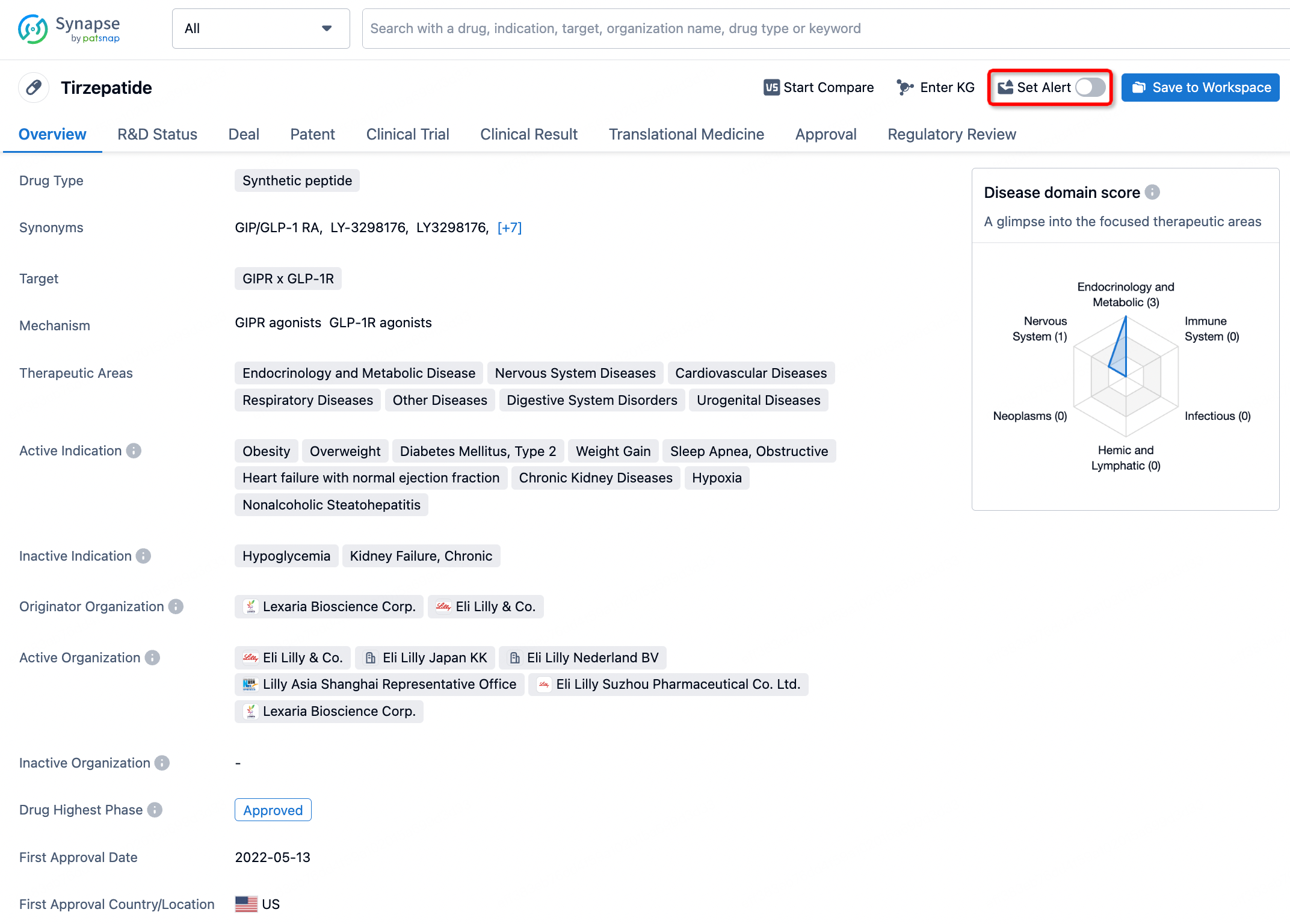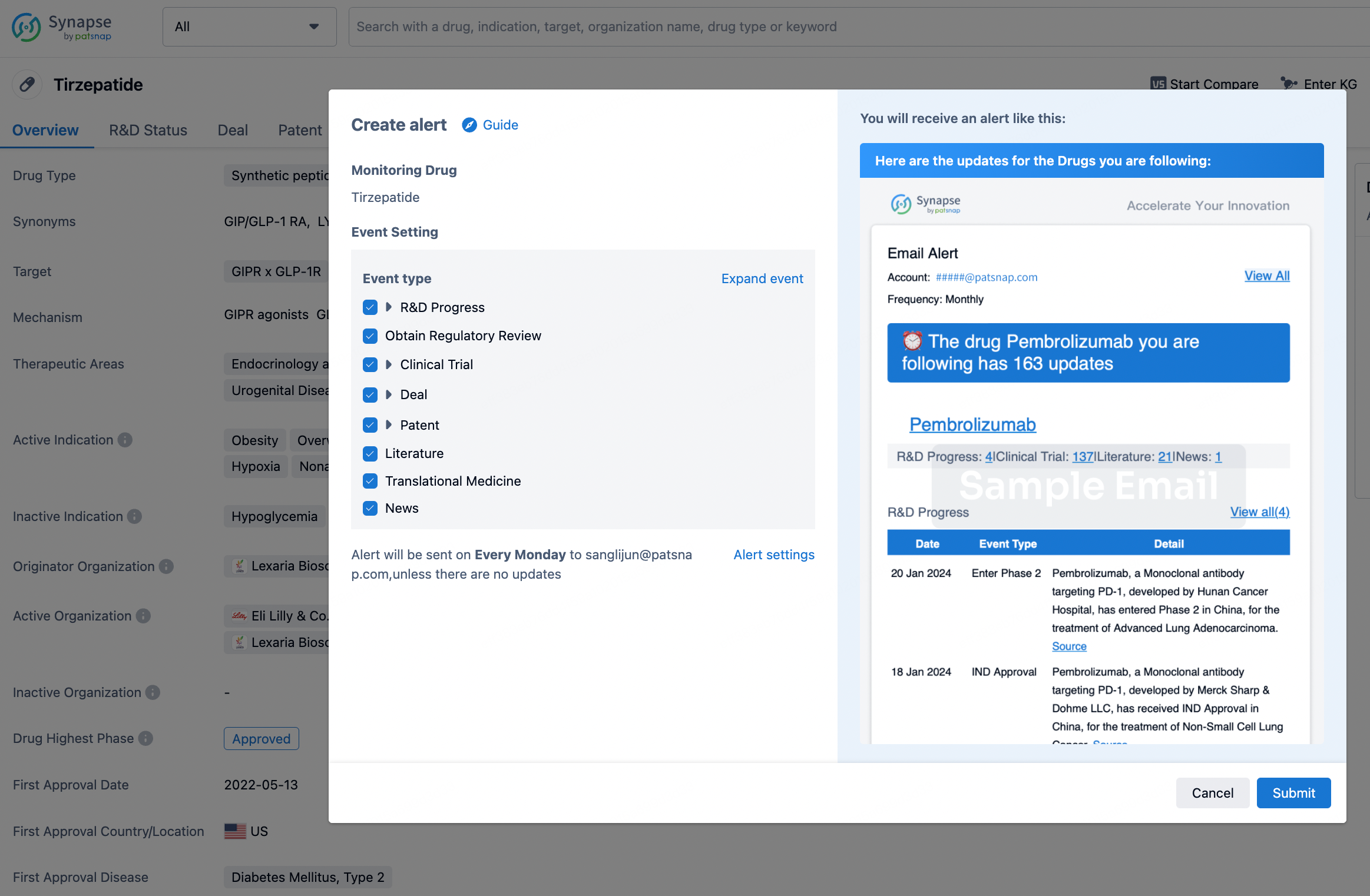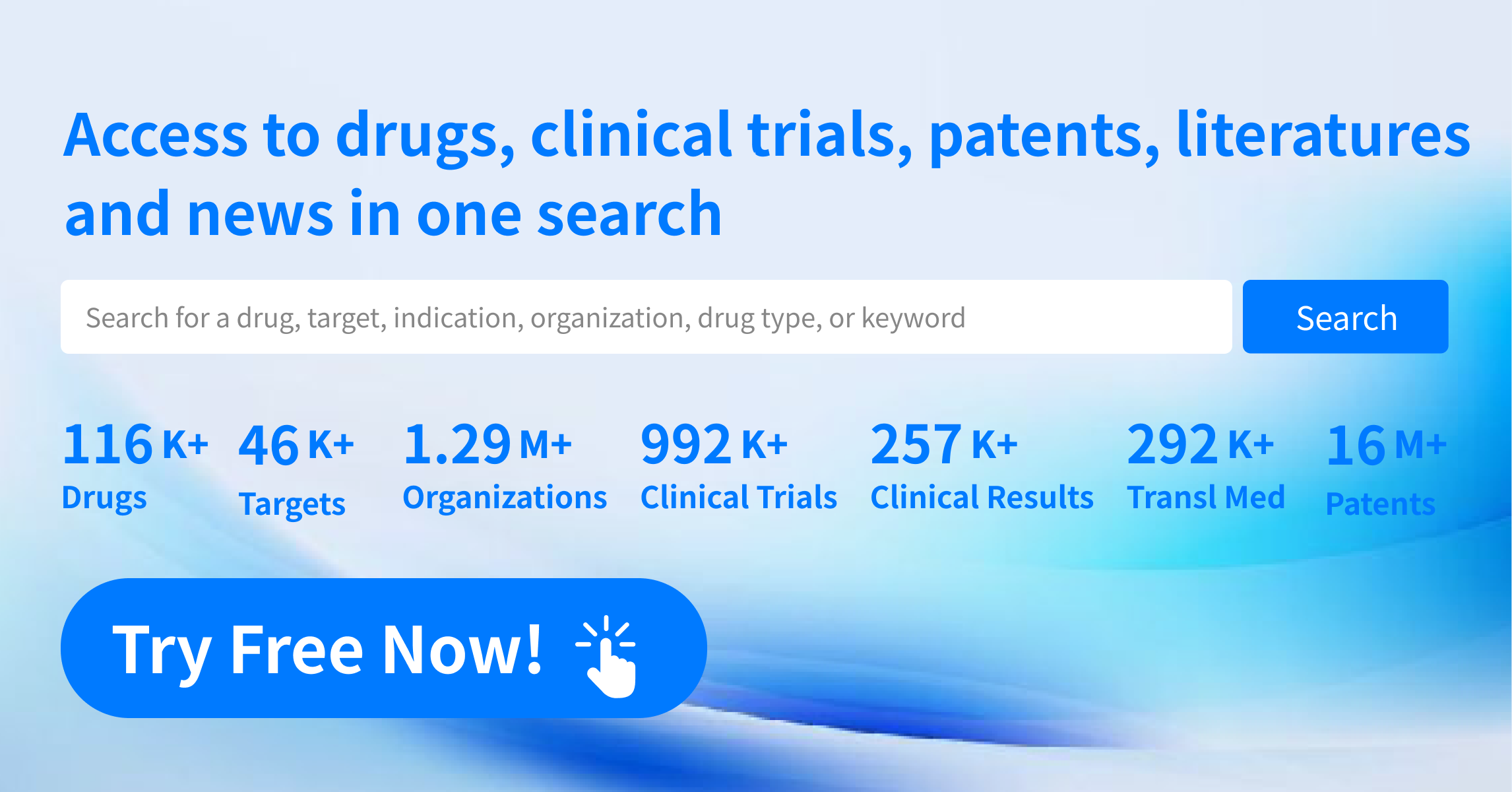Request Demo
What is Beraprost Sodium used for?
14 June 2024
Beraprost Sodium: A Comprehensive Overview
Beraprost Sodium is a synthetic analogue of prostacyclin (PGI2) that has garnered significant attention in the medical community due to its potential therapeutic benefits. Marketed under trade names such as Dorner and Beraprost, this drug is primarily indicated for the treatment of conditions like pulmonary arterial hypertension (PAH) and peripheral arterial disease (PAD). Developed by Toray Industries, Beraprost Sodium has been a subject of extensive research and clinical trials since the early 1990s. This drug targets the prostacyclin receptors in the body, thereby helping to dilate blood vessels and inhibit platelet aggregation. Over the years, research institutions worldwide have conducted numerous studies to explore its efficacy, safety, and potential new indications.
Beraprost Sodium Mechanism of Action
The mechanism of action of Beraprost Sodium is rooted in its ability to mimic the activity of naturally occurring prostacyclin. Prostacyclin is a potent vasodilator and inhibitor of platelet aggregation, playing a crucial role in vascular homeostasis. Beraprost Sodium binds to the prostacyclin (IP) receptors, which are G-protein-coupled receptors located on the surface of vascular endothelial cells and platelets.
Upon binding to these receptors, Beraprost Sodium activates adenylate cyclase, an enzyme that converts ATP to cyclic AMP (cAMP). Elevated levels of cAMP lead to a cascade of intracellular events resulting in the relaxation of vascular smooth muscle cells and inhibition of platelet aggregation. This dual action helps reduce the elevated blood pressure in the pulmonary arteries and improves blood flow, making it particularly beneficial for patients with PAH and PAD.
Moreover, Beraprost Sodium has been shown to have anti-inflammatory properties and can inhibit the proliferation of vascular smooth muscle cells, further contributing to its therapeutic effects. The drug's ability to modulate vascular tone and platelet function without causing significant systemic hypotension makes it a valuable option for long-term management of vascular diseases.
How to Use Beraprost Sodium
Beraprost Sodium is typically administered orally in the form of tablets. The dosage and frequency of administration depend on the specific condition being treated and the patient's overall health status. For instance, in the treatment of pulmonary arterial hypertension, a common dosing regimen might involve taking Beraprost Sodium three to four times a day, with each dose ranging from 20 to 40 micrograms.
The onset of action for Beraprost Sodium is relatively rapid, with peak plasma concentrations usually achieved within 30 to 60 minutes after oral administration. This rapid absorption allows for quick relief of symptoms, making it an effective option for managing acute exacerbations of PAH and PAD. However, due to its short half-life of approximately 1 to 1.5 hours, maintaining therapeutic levels in the bloodstream requires multiple doses throughout the day.
It's important to follow the prescribed dosing schedule and not to adjust the dose without consulting a healthcare provider. Missed doses should be taken as soon as remembered, but if it's almost time for the next dose, it's advisable to skip the missed dose to avoid doubling up.
What are Beraprost Sodium Side Effects
Like any medication, Beraprost Sodium comes with its own set of side effects and contraindications. Common side effects include headache, flushing, dizziness, and gastrointestinal disturbances such as nausea and diarrhea. These side effects are generally mild to moderate and tend to diminish with continued use as the body adjusts to the medication.
However, more severe side effects can occur, although they are less common. These include hypotension (low blood pressure), which can lead to symptoms like fainting and dizziness, especially when standing up quickly. Patients may also experience jaw pain, muscle aches, and potential bleeding complications due to the drug's antiplatelet effects.
Contraindications for the use of Beraprost Sodium include known hypersensitivity to the drug or any of its components. It is also contraindicated in patients with severe liver or kidney impairment, as these conditions can affect the drug's metabolism and excretion, leading to increased risk of adverse effects. Caution is advised when using Beraprost Sodium in patients with a history of bleeding disorders or peptic ulcers, given its potential to inhibit platelet aggregation.
Pregnant and breastfeeding women should use Beraprost Sodium only if the potential benefits outweigh the risks, as there is limited data on its safety in these populations. Regular monitoring and consultations with a healthcare provider are essential to manage any emerging side effects effectively.
What Other Drugs Will Affect Beraprost Sodium
Drug interactions are a critical consideration when using Beraprost Sodium. Concomitant use of other medications can either potentiate or diminish its therapeutic effects and increase the risk of side effects. For instance, the combination of Beraprost Sodium with other vasodilators or antihypertensive agents can result in additive hypotensive effects, leading to a significant drop in blood pressure.
Nonsteroidal anti-inflammatory drugs (NSAIDs) and anticoagulants, including aspirin and warfarin, can increase the risk of bleeding when used alongside Beraprost Sodium due to its antiplatelet activity. Patients should be closely monitored for signs of bleeding, and dose adjustments may be necessary.
Drugs that inhibit the enzyme cytochrome P450 (CYP) 3A4, such as certain antifungals and antibiotics, can affect the metabolism of Beraprost Sodium, potentially leading to elevated plasma levels and increased risk of adverse effects. Conversely, inducers of CYP3A4, like some antiepileptic drugs, can reduce the efficacy of Beraprost Sodium by increasing its metabolic breakdown.
It's also worth noting that grapefruit juice, a known inhibitor of CYP3A4, can interact with Beraprost Sodium and should generally be avoided to prevent unpredictable changes in drug levels.
In conclusion, Beraprost Sodium is a promising drug with a unique mechanism of action and a range of therapeutic applications, particularly in managing pulmonary arterial hypertension and peripheral arterial disease. Understanding its proper use, potential side effects, and drug interactions is crucial for maximizing its benefits and minimizing risks. As research continues to evolve, Beraprost Sodium may find even broader applications in the realm of vascular health. Always consult healthcare professionals for personalized advice and treatment plans tailored to individual health needs.
Beraprost Sodium is a synthetic analogue of prostacyclin (PGI2) that has garnered significant attention in the medical community due to its potential therapeutic benefits. Marketed under trade names such as Dorner and Beraprost, this drug is primarily indicated for the treatment of conditions like pulmonary arterial hypertension (PAH) and peripheral arterial disease (PAD). Developed by Toray Industries, Beraprost Sodium has been a subject of extensive research and clinical trials since the early 1990s. This drug targets the prostacyclin receptors in the body, thereby helping to dilate blood vessels and inhibit platelet aggregation. Over the years, research institutions worldwide have conducted numerous studies to explore its efficacy, safety, and potential new indications.
Beraprost Sodium Mechanism of Action
The mechanism of action of Beraprost Sodium is rooted in its ability to mimic the activity of naturally occurring prostacyclin. Prostacyclin is a potent vasodilator and inhibitor of platelet aggregation, playing a crucial role in vascular homeostasis. Beraprost Sodium binds to the prostacyclin (IP) receptors, which are G-protein-coupled receptors located on the surface of vascular endothelial cells and platelets.
Upon binding to these receptors, Beraprost Sodium activates adenylate cyclase, an enzyme that converts ATP to cyclic AMP (cAMP). Elevated levels of cAMP lead to a cascade of intracellular events resulting in the relaxation of vascular smooth muscle cells and inhibition of platelet aggregation. This dual action helps reduce the elevated blood pressure in the pulmonary arteries and improves blood flow, making it particularly beneficial for patients with PAH and PAD.
Moreover, Beraprost Sodium has been shown to have anti-inflammatory properties and can inhibit the proliferation of vascular smooth muscle cells, further contributing to its therapeutic effects. The drug's ability to modulate vascular tone and platelet function without causing significant systemic hypotension makes it a valuable option for long-term management of vascular diseases.
How to Use Beraprost Sodium
Beraprost Sodium is typically administered orally in the form of tablets. The dosage and frequency of administration depend on the specific condition being treated and the patient's overall health status. For instance, in the treatment of pulmonary arterial hypertension, a common dosing regimen might involve taking Beraprost Sodium three to four times a day, with each dose ranging from 20 to 40 micrograms.
The onset of action for Beraprost Sodium is relatively rapid, with peak plasma concentrations usually achieved within 30 to 60 minutes after oral administration. This rapid absorption allows for quick relief of symptoms, making it an effective option for managing acute exacerbations of PAH and PAD. However, due to its short half-life of approximately 1 to 1.5 hours, maintaining therapeutic levels in the bloodstream requires multiple doses throughout the day.
It's important to follow the prescribed dosing schedule and not to adjust the dose without consulting a healthcare provider. Missed doses should be taken as soon as remembered, but if it's almost time for the next dose, it's advisable to skip the missed dose to avoid doubling up.
What are Beraprost Sodium Side Effects
Like any medication, Beraprost Sodium comes with its own set of side effects and contraindications. Common side effects include headache, flushing, dizziness, and gastrointestinal disturbances such as nausea and diarrhea. These side effects are generally mild to moderate and tend to diminish with continued use as the body adjusts to the medication.
However, more severe side effects can occur, although they are less common. These include hypotension (low blood pressure), which can lead to symptoms like fainting and dizziness, especially when standing up quickly. Patients may also experience jaw pain, muscle aches, and potential bleeding complications due to the drug's antiplatelet effects.
Contraindications for the use of Beraprost Sodium include known hypersensitivity to the drug or any of its components. It is also contraindicated in patients with severe liver or kidney impairment, as these conditions can affect the drug's metabolism and excretion, leading to increased risk of adverse effects. Caution is advised when using Beraprost Sodium in patients with a history of bleeding disorders or peptic ulcers, given its potential to inhibit platelet aggregation.
Pregnant and breastfeeding women should use Beraprost Sodium only if the potential benefits outweigh the risks, as there is limited data on its safety in these populations. Regular monitoring and consultations with a healthcare provider are essential to manage any emerging side effects effectively.
What Other Drugs Will Affect Beraprost Sodium
Drug interactions are a critical consideration when using Beraprost Sodium. Concomitant use of other medications can either potentiate or diminish its therapeutic effects and increase the risk of side effects. For instance, the combination of Beraprost Sodium with other vasodilators or antihypertensive agents can result in additive hypotensive effects, leading to a significant drop in blood pressure.
Nonsteroidal anti-inflammatory drugs (NSAIDs) and anticoagulants, including aspirin and warfarin, can increase the risk of bleeding when used alongside Beraprost Sodium due to its antiplatelet activity. Patients should be closely monitored for signs of bleeding, and dose adjustments may be necessary.
Drugs that inhibit the enzyme cytochrome P450 (CYP) 3A4, such as certain antifungals and antibiotics, can affect the metabolism of Beraprost Sodium, potentially leading to elevated plasma levels and increased risk of adverse effects. Conversely, inducers of CYP3A4, like some antiepileptic drugs, can reduce the efficacy of Beraprost Sodium by increasing its metabolic breakdown.
It's also worth noting that grapefruit juice, a known inhibitor of CYP3A4, can interact with Beraprost Sodium and should generally be avoided to prevent unpredictable changes in drug levels.
In conclusion, Beraprost Sodium is a promising drug with a unique mechanism of action and a range of therapeutic applications, particularly in managing pulmonary arterial hypertension and peripheral arterial disease. Understanding its proper use, potential side effects, and drug interactions is crucial for maximizing its benefits and minimizing risks. As research continues to evolve, Beraprost Sodium may find even broader applications in the realm of vascular health. Always consult healthcare professionals for personalized advice and treatment plans tailored to individual health needs.
How to obtain the latest development progress of all drugs?
In the Synapse database, you can stay updated on the latest research and development advances of all drugs. This service is accessible anytime and anywhere, with updates available daily or weekly. Use the "Set Alert" function to stay informed. Click on the image below to embark on a brand new journey of drug discovery!
AI Agents Built for Biopharma Breakthroughs
Accelerate discovery. Empower decisions. Transform outcomes.
Get started for free today!
Accelerate Strategic R&D decision making with Synapse, PatSnap’s AI-powered Connected Innovation Intelligence Platform Built for Life Sciences Professionals.
Start your data trial now!
Synapse data is also accessible to external entities via APIs or data packages. Empower better decisions with the latest in pharmaceutical intelligence.


